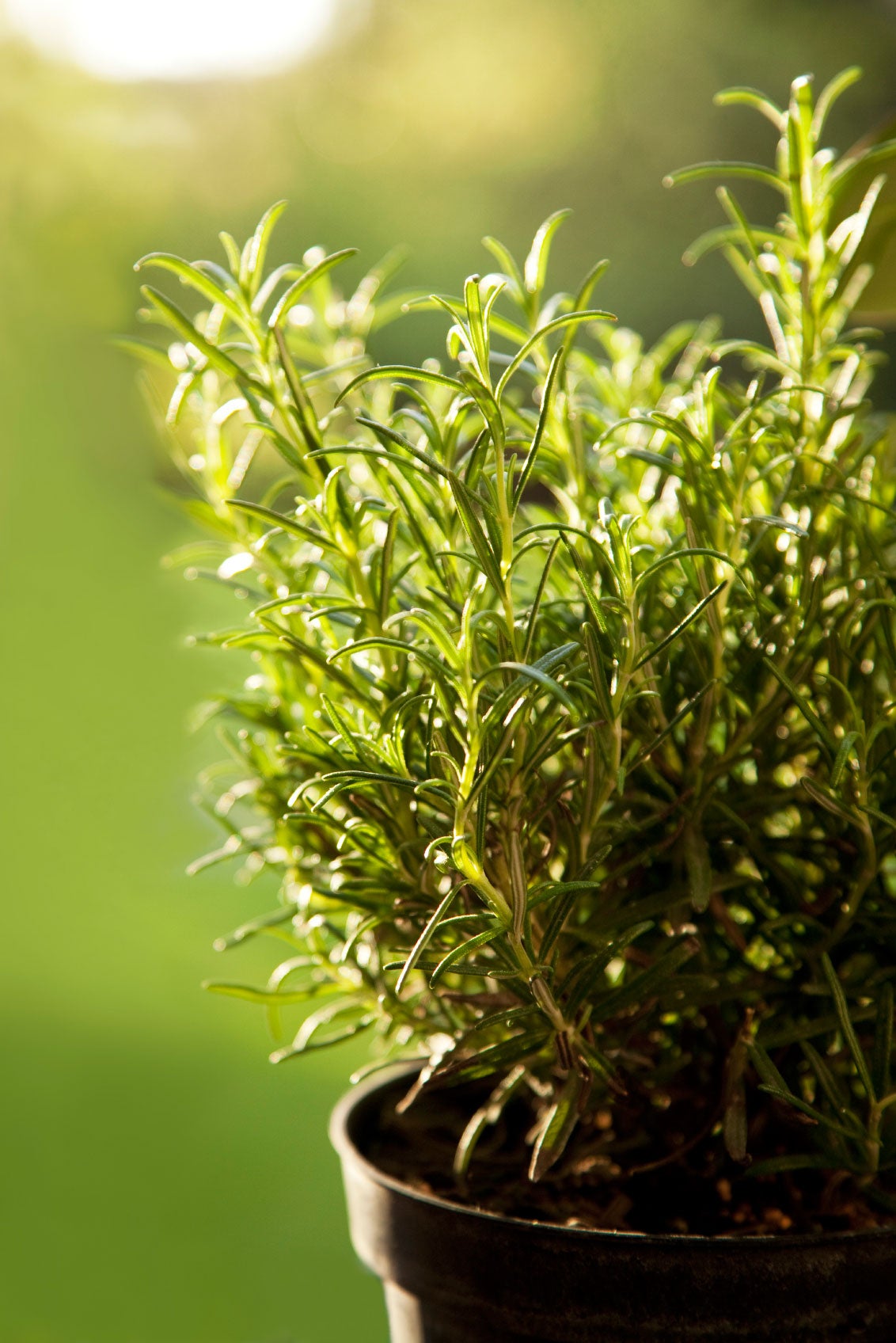Potted Rosemary Herbs: Caring For Rosemary Grown In Containers


Rosemary (Rosmarinus officinalis) is a savory kitchen herb with a pungent flavor and attractive, needle-like leaves. Growing rosemary in pots is surprisingly simple and you can use the herb to add flavor and variety to a number of culinary dishes. Read on for tips about growing potted rosemary herbs.
Planting Rosemary in a Pot
Rosemary in a pot requires a good quality commercial potting mixture with ingredients such as fine pine bark or peat moss with vermiculite or perlite. Growing rosemary in a pot with a diameter of at least 12 inches (30 cm.) allows enough space for the roots to grow and expand. Be sure the container has a drainage hole because rosemary grown in containers will rot in soggy, poorly drained soil.
The easiest way to grow rosemary in a pot is to start with a small bedding plant from a garden center or nursery, as rosemary is difficult to grow from seed.
Plant the rosemary at the same depth it is planted in the container, since planting too deeply may suffocate the plant. Rosemary is a Mediterranean plant that will thrive in a sunny location on your porch or patio; however, rosemary isn't cold-hardy. If you live in a climate with chilly winters, bring the plant indoors before the first frost in autumn. If you prefer not to grow rosemary indoors, you can grow the herb as an annual and start with a new rosemary plant every spring.
Rosemary Container Care
Caring for rosemary grown in containers is easy enough. Proper watering is the key to growing potted rosemary herbs, and the best way to determine if the plant needs water is to insert your finger into the soil. If the top 1 to 2 inches (3-5 cm.) of soil feels dry, it's time to water. Water the plant deeply, then let the pot drain freely and never let the pot stand in water. Use care, as overwatering is the most common reason rosemary plants don't survive in containers.
Rosemary in pots generally doesn't require fertilizer, but you can use a dry fertilizer or a dilute solution of a water-soluble liquid fertilizer if the plant looks pale green or growth is stunted. Again, use care, as too much fertilizer may damage the plant. Too little fertilizer is always better than too much. Always water the rosemary immediately after applying fertilizer. Be sure to apply fertilizer to the potting soil - not the leaves.
Maintaining Potted Rosemary Herbs in Winter
Keeping a rosemary plant alive during the winter can be tricky. If you decide to bring your plant indoors during the winter, it will need a bright location. A sunny windowsill is a good place as long as the plant won't be chilled by cold air. Be sure the plant has good air circulation and that it isn't crowded with other plants. Be careful not to overwater.
Sign up for the Gardening Know How newsletter today and receive a free copy of our e-book "How to Grow Delicious Tomatoes".

A Credentialed Garden Writer, Mary H. Dyer was with Gardening Know How in the very beginning, publishing articles as early as 2007.